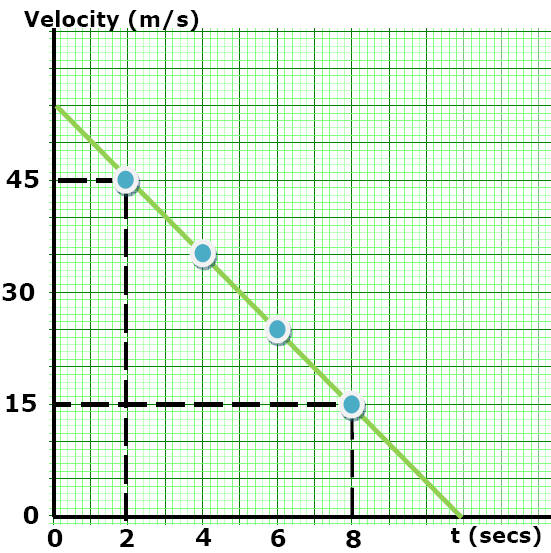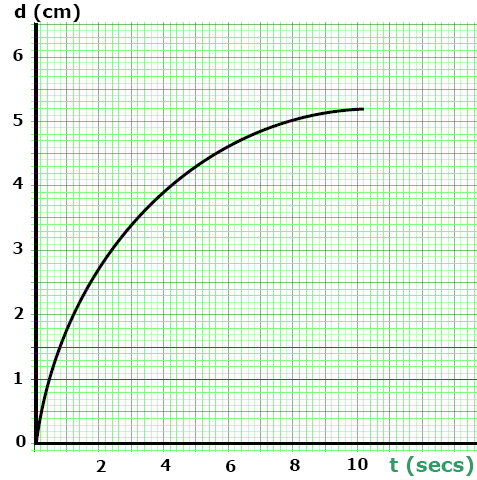![]()
![]()

Acceleration
|
This pic shows the position of a basketball at even time intervals. Explain why you know the ball is accelerating.
|
![]()
[ HTML5 ]
(d vs t)
![]()
Video Instruction
showmethephysics.com
B. Interpreting Motion Diagrams
Acceleration Review
Acceleration
- the time rate of change in velocity
a = ∆V/∆t = (Vf - Vi)/t
| Uniform Acceleration? |
- constant change
in velocity per unit time
Which data shows uniform acceleration? Why?
|
|
Left Data Shows Constant Acceleration
a = ?
a = 2 m/s2
Non-Constant OR Constant Acceleratio?

Ex) Describe the acceleration

acceleration is constant +
Constant Non-Constant Acceleration?

Prove this is constant acceleration

| Every 2 seconds the object gains exactly 15 m/s |
Motion Map
Velocity
0 m/s / 15 m/s / 30 m/s / 45 m/s

0 sec / 2 sec / 2 sec / 2 sec

Find the acceleration
a = ∆V/∆t
(+15 m/s)/2 sec
a = +7.5 m/s2

Motion Map
Acceleration
2 sec / 2 sec / 2 sec / 2 sec

+7.5 m/s2/+7.5 m/s2/+7.5 m/s2/+7.5 m/s2
Motion Map
Displacement

Slope of a V vs. t plot
Slope = ∆y/∆x
= ∆V/∆t = a
Ex)
Describe motion using
y axis and slope

Step 1: y axis:
Step 2: Slope
Answers
Step 1: y axis: V constant
Step 2: Slope = ∆V/∆t = a
a = 0

|
Ranking Task Rank the acceleration from largest to smallest
January 2001 Regents
|
|
Ex 4)
Step 1: y axis:
Step 2: Slope
Answers
Velocity is Decreasing,
Acceleration
is
Calculate the acceleration
a = (Vf- Vi)/t
(15 m/s - 45 m/s )
= -5 m/s2
Video Instruction showmethephysics.com
Ex 5) Describe the motions Velocity (m/s)
|
|
Step 1: y axis: Step 2: Slope
Answers Step 1: y axis: V increasing
Step 2: Slope = ∆V/∆t = a a is increasing
Ex) Describe the motions
Step 1: y axis: Step 2: Slope
Step 1: y axis: d increasing Step 2: Slope = d/t = V
Velocity is increasing smoothly Acceleration is constant & Positive
Non-Uniform Acceleration
Ex) Describe motions
Step 1: y axis: Step 2: Slope
Step 1: y axis: d increasing Step 2: Slope = d/t = v Velocity is Decreasing smoothly (slope)
Acceleration is constant & negative
Describe motions d (cm)
Step 1: y axis: Step 2: Slope
Step 1: y axis: d constant Step 2: Slope = d/t = v
v = 0 (slope) a = 0
Analyzing Motion Plots - HTML5
Try This at Home
ŠTony Mangiacapre., - All Rights Reserved [Home]
|









